Travelers to Armenia visit our beautiful churches, fortresses, archaeological sites, and scenic vistas in Armenia’s mountains and valleys. But other venues can bring visitors closer to Armenian life and traditions. These are the numerous village celebrations, commemorations, and festivals of both religious and secular origin.

Some of these include…
The Berd Berry and Honey Festival
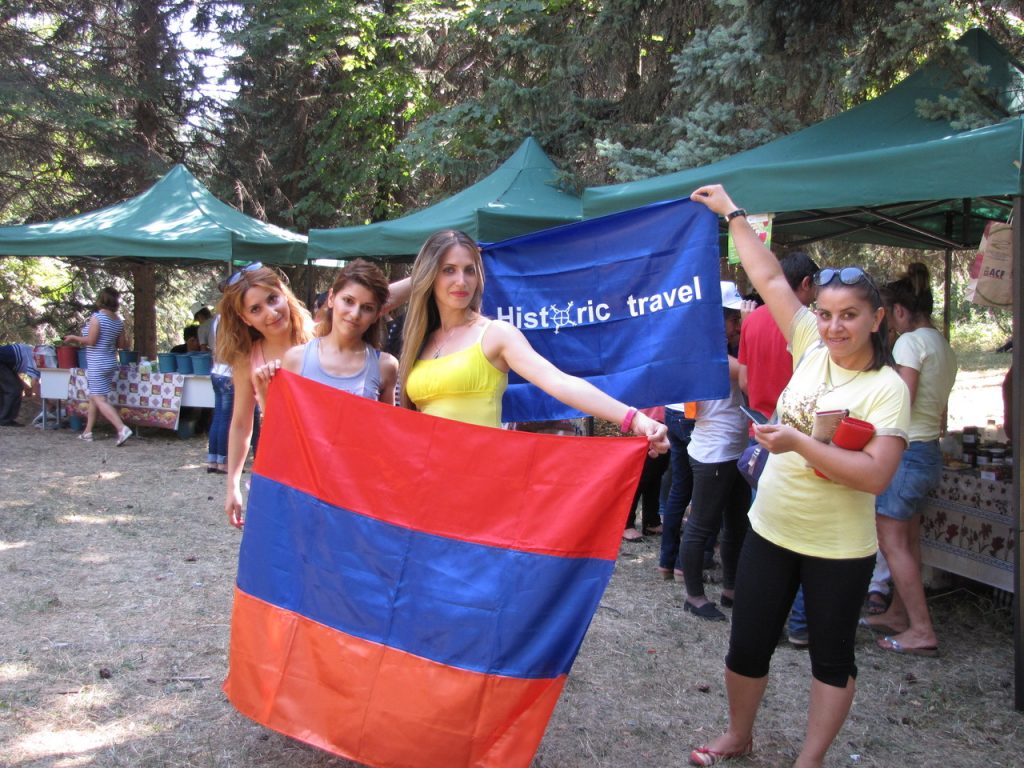
The city of Berd is in mountainous Tavush province, northeast Armenia, the center of a region called Shamshadin—an Arabic name which retains popular usage. Many of the villages to the east of Berd are perilously close to the border with Azerbaijan.
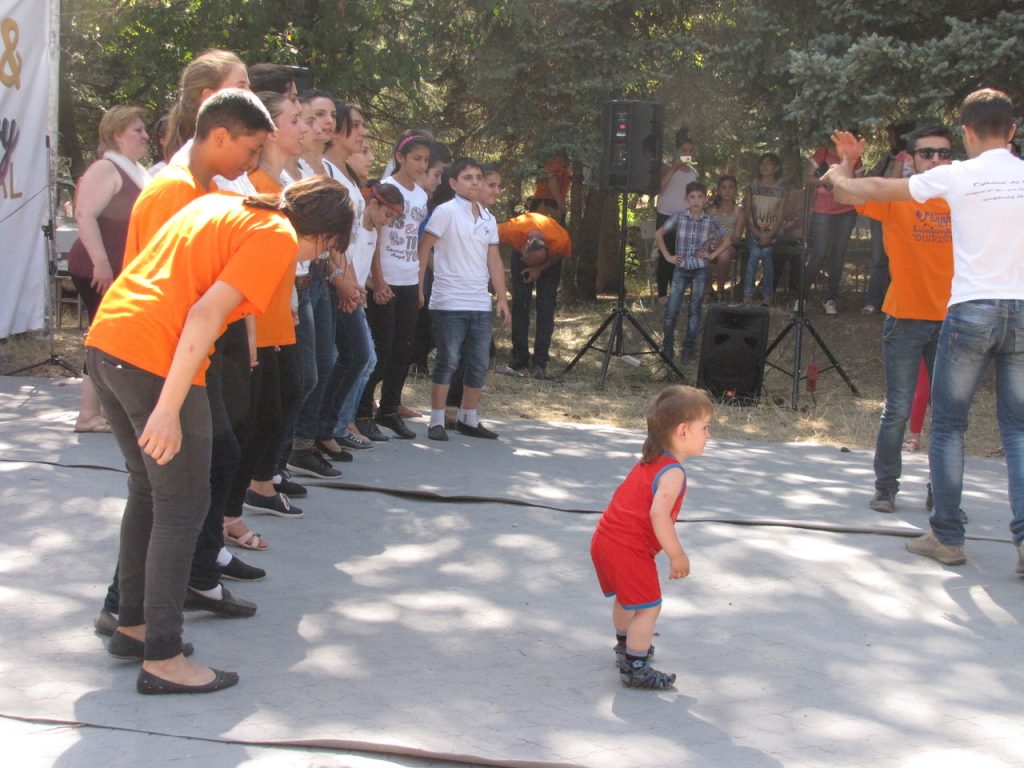
A church service at Berd’s Surb Hovhannes Church (consecrated 2014) was officiated by Der Aram Mirzoyan from Berd, and Der Dajad Davidian, the former pastor of St. James Church in Watertown, Mass. The badarak was mostly attended by women and children with few young or middle-aged men present. The choir was magnificent, with solo parts of the Mass sung by an immensely talented 14-year old young lady. Part way though the badarak, there was the shuffle of feet outside the church. In came soldiers, dressed in their fatigues, apparently done with their shift of securing the nearby border. Immediately, many of the children present went to be with the soldiers who were perhaps their fathers or older brothers.
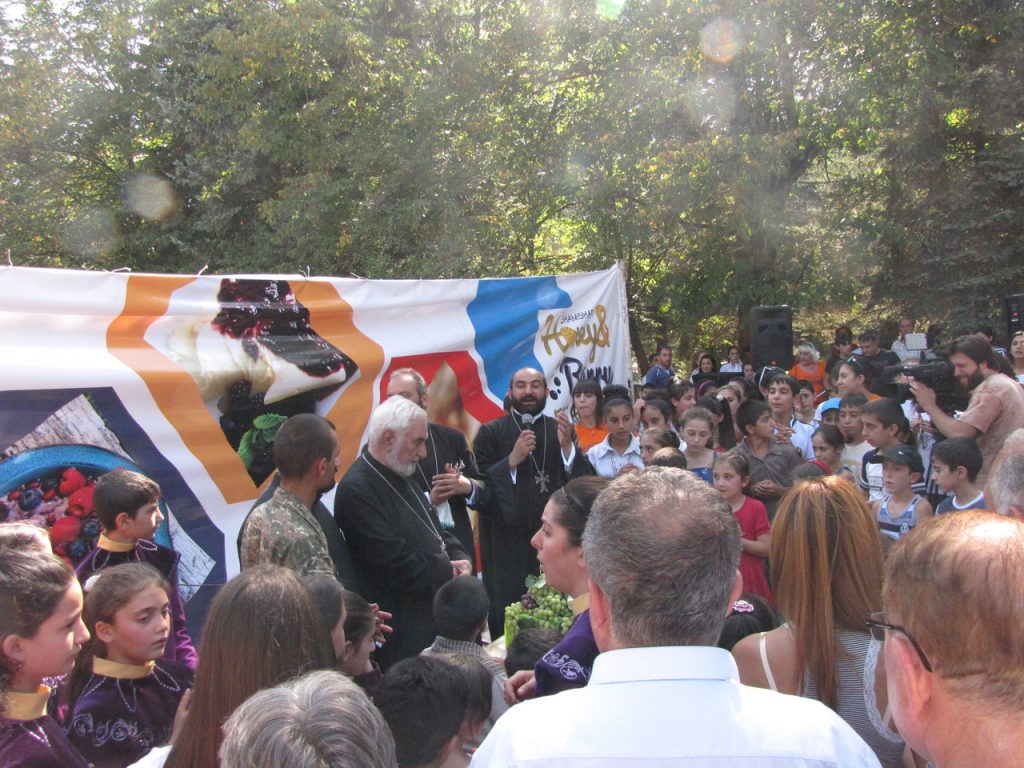
At a large field on the edge of town, booths were set up offering local handicrafts and foods. By the time I completed my visits to the booths, trying to decide which delicacies to select for my lunch, I was full from all the free samples I was offered! I did actually buy some food as well, and also bought a number of jars of local honey for ourselves and friends back in the U.S. The festival included Armenian music, with young people dancing. Der Aram and Der Dajad together blessed our soldiers who gathered in a group. There was a dance dedicated to our soldiers as well.
This was not part of the festival, but Der Aram accompanied us to a visit to a nearby military compound. At the compound’s entrance, two armed sentries looked inside our car. When they saw Der Aram, both sentries snapped to attention, saluted, and opened the gate. Such is the respect Der Aram has earned. During a brief talk with the local commander I asked, “What message do you have for the diaspora?” “Tell them that we are not fighting for this or that political party. This is our land. We will fight to defend it,” he said.
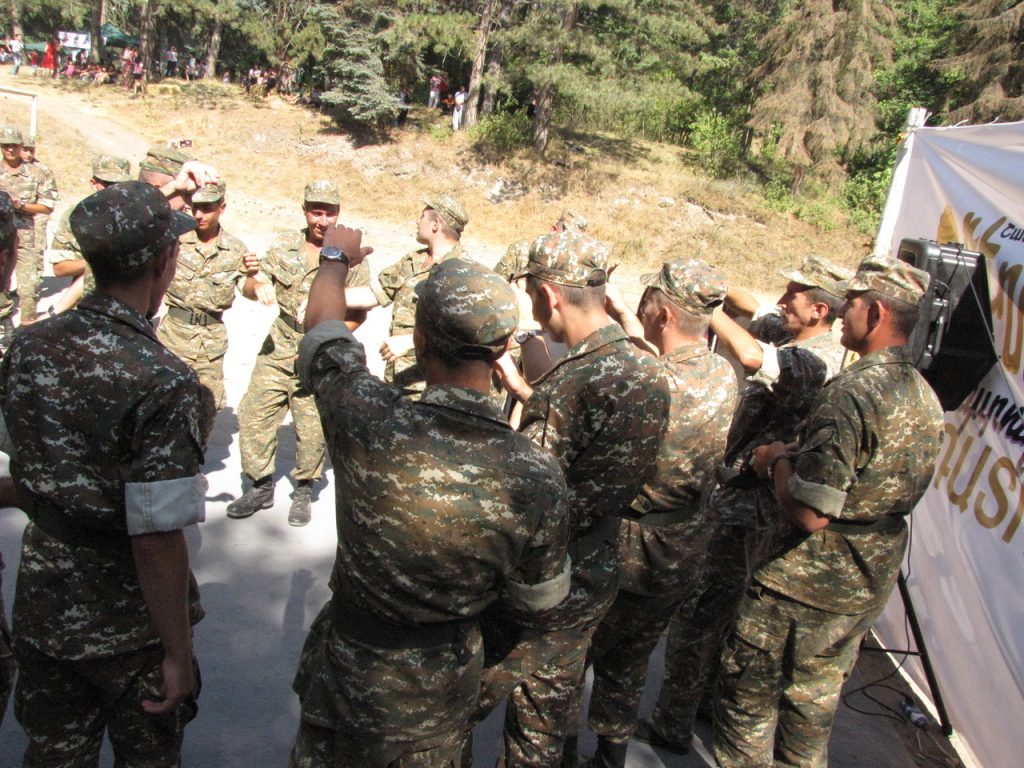
The Dolma Festival
Since 2011, the Dolma Festival has been held in various sites around Armenia. In 2013, my wife and I attended the festival at the Sardarabad Museum and Memorial, the site of the victorious battle which, together with the victories at Bash Aparan and Karakilise, saved Armenia from extinction in 1918.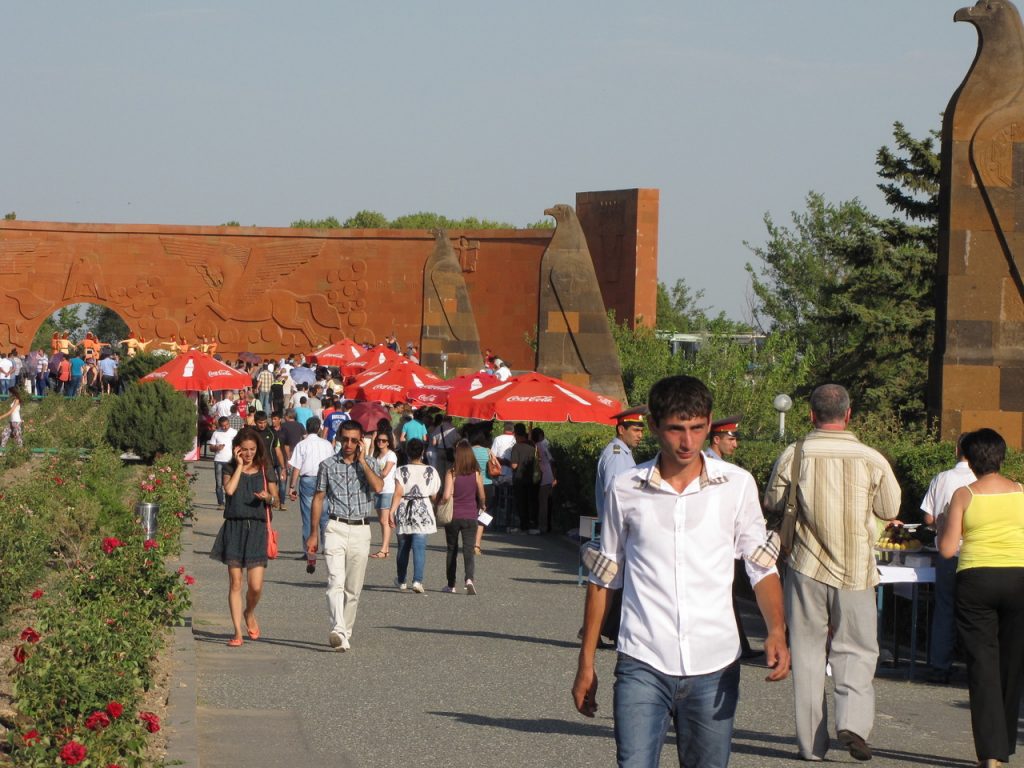
Master chefs from around Armenia produced some of the most amazing Armenian dishes I’ve ever tasted. There were dolmas stuffed with fish, and dolmas wrapped with the grape leaves still attached to lengths of vine—as if the dolma itself was growing on the vine. Present were then U.S. Ambassador John Heffern, wandering from booth to booth with his wife, chatting with the chefs and enjoying the food. There were dance groups from local schools, and live Armenian music featuring a group of bagpipe players (parkapzuk). I believe this instrument was more popular in medieval times, but it seems to be making a slight comeback.



Vardavar–Christian Feast of Transfiguration
It’s hard to miss Vardavar since just about wherever you are, someone is likely to drench you with water, and it’s all perfectly acceptable on this day. This once pagan festival was transformed into a Christian feast, but it retains some of its pre-Christian tradition.
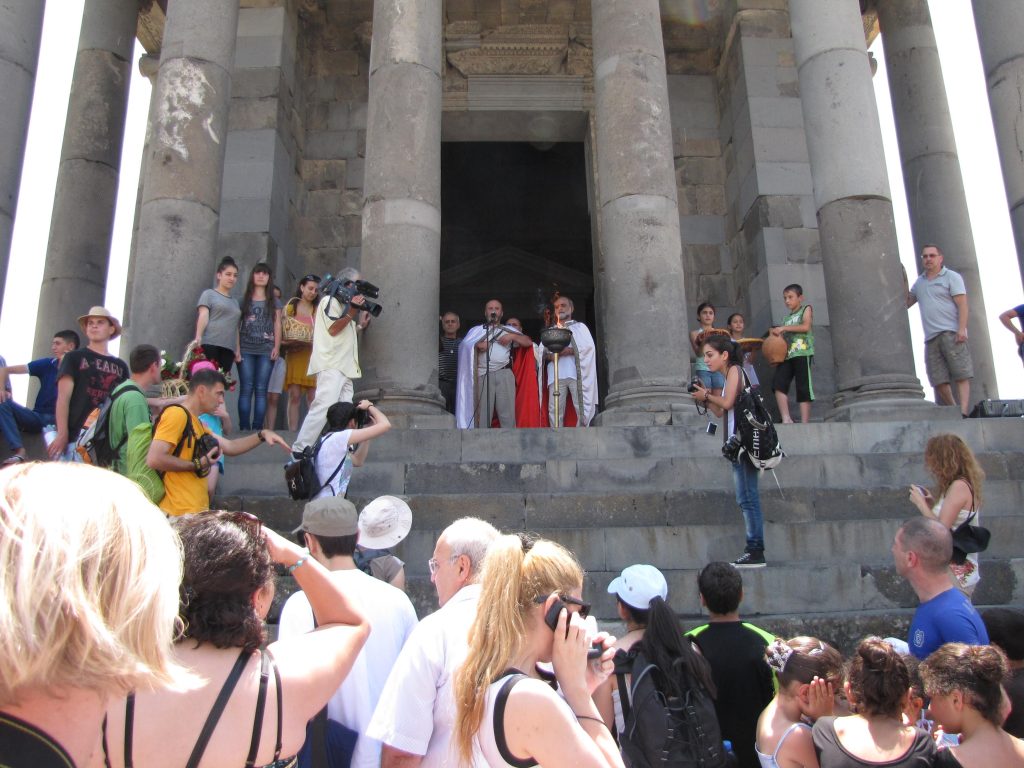
Getting doused is not bad, as Vardavar is usually in July; it’s usually hot, and you may welcome a drenching as long as your camera stays dry. But to get a flavor of the pagan aspects, it’s best to visit the Garni temple. There, pagan priests offer their blessings to bread, apricots, flowers, and especially water, all of which are important to life and are distributed to attendees. There is, of course, Armenian music and dancing, and a spectacular view of the Garni temple and the valley below.


Navasard
Navasard is the start of the ancient Armenian New Year, which is on Aug. 11. This commemorates the date that Hayk and his comrades, escaping the tyrant Bell’s tyranny, fled north to the Armenian highlands. As Bell approached, Hayk’s powerful arms let fly an arrow which passed through Bell, killing him instantly. Hayk established himself and his family in Armenia, in what Armenians call Hayots Tsor. Hayk’s descendants, Armenians, are called Haykazunk. This, according to Armenian tradition, was in 2492 B.C.
Again, for a pagan celebration of this pre-Christian holiday, visit Garni. Alternatively, there is usually a ceremony at the statue of Hayk on the highway in the Nor Nork district of Yerevan. A taxi driver can easily take you there.
The Raspberry (Aznavamori) Festival

The 2016 Raspberry Festival took place in Ashotavan, near Sisian in Syunik province. There were many craft and food booths from the various villages in the region, as well as booths set up by a number of NGOs operating in Armenia. Authentic Armenian music was provided by musicians playing traditional instruments such as the kamancha, kanoon, duduk, and zurna, with dance groups comprised of dancers of various ages from young children to young adults. Besides the music, there was the performance of a tightrope walker, a traditional Armenian art form, in which the performer on his tightrope seemed to levitate above the mountains of Syunik on the horizon.
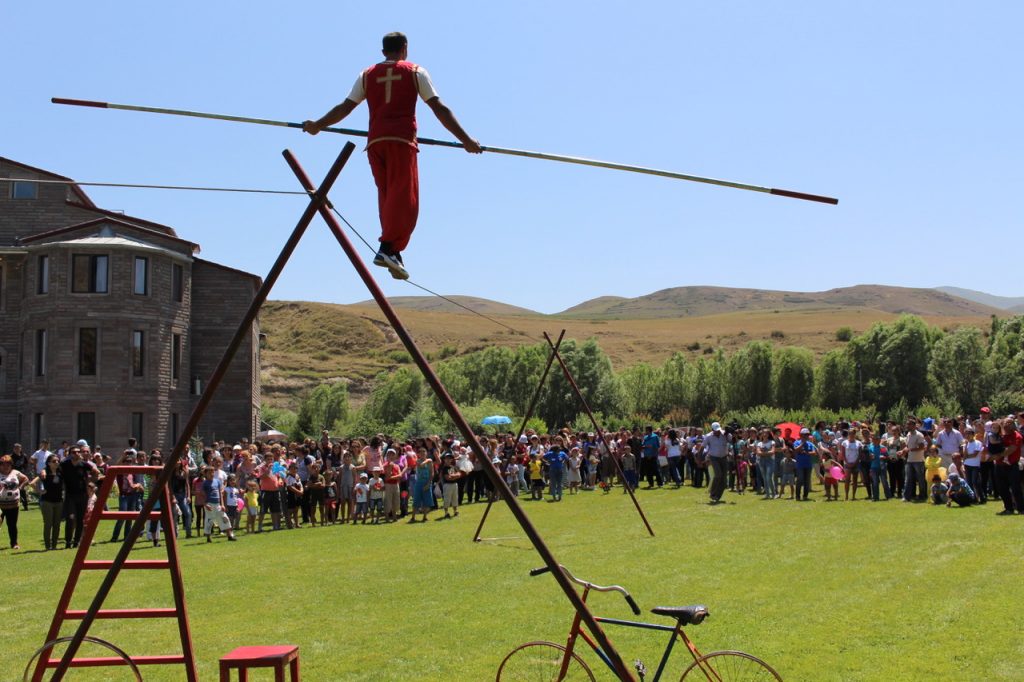
The Sheep Shearing Festival
In June 2017, the village of Khot hosted a “Sheep Searing Festival.” Khot, in Syunik province, is not far from Sisian and is next to Shinuhayr, the departure point for the aerial tramway ride to the Tatev Monastery. Various village crafts were demonstrated; foods such as pickles, preserves, and pastries were for sale. For those who wanted to get out of the sun for a spell, there was a restaurant at one end of the field. Music, both Armenian and non-Armenian, was provided with many of the young people dancing.

The highlight of the festival, however, was the sheep shearing contest. Representatives of various villages competed to see who was best. Criteria for the best sheep shearer was not only time, but the wool had to be completely removed from the sheep, and the sheep must not be injured with cuts or nicks. Attendees from various villages loudly cheered for the shearer from their village. During the hot summer months, sheep will naturally shed their wool if not removed by their keepers.
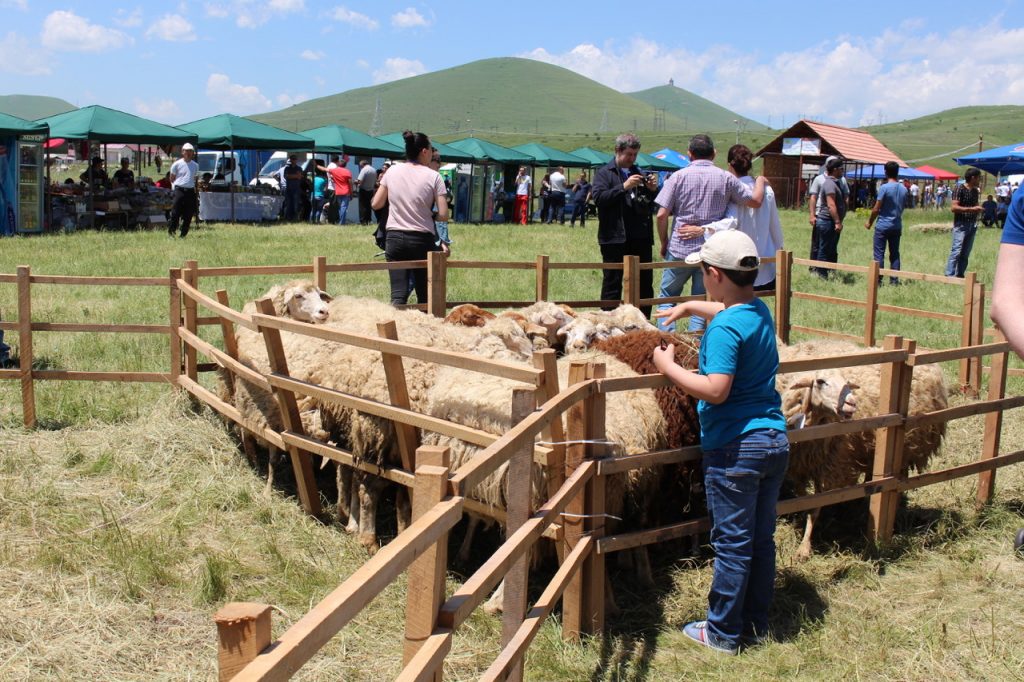
***
Armenia’s festivals provide a unique opportunity for visitors to interact informally with Armenian culture and traditions. I believe the Armenian Ministries of Culture and Tourism should do more to promote information about such events, including village celebrations, festivals, and cultural performances (Armenian cultural performances, please, not more amateur western noise pollution). This should be done early each year, in time for visitors to plan their trips. Listings should include all events throughout Armenia and Artsakh and not just in or around Yerevan.
How about the two ministries cited above, working with tour agencies, getting on board with this?
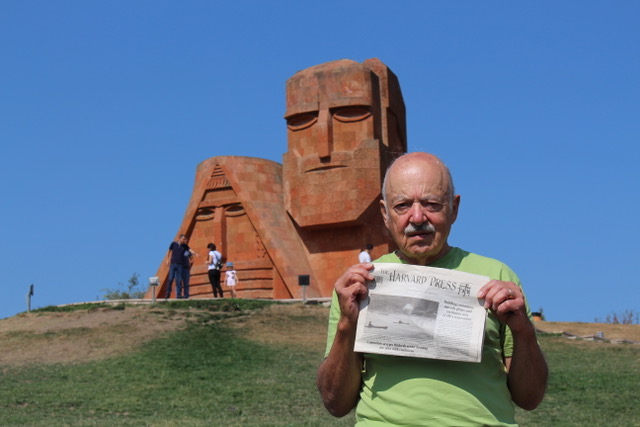
3 Comments To "Unseen Armenia: Armenia’s Festivals"
#1 Comment By Luso On July 3, 2017 @ 3:10 pm
Bravo, Hovsep jan. A terrifically informative and inspiring roundup. You are a superb ambassador for Armenia!
#2 Comment By Skip Brewster On July 3, 2017 @ 5:56 pm
As a Peace Corps volunteer in rural Armenia 2011-2013, I quickly became immersed into Armenia’s rich culture. When my California family came to visit, they were also welcomed and treated as special guests. These wonderful festival pictures reminded me of the good times I experienced including the diverse art, dancing and social singing. I greatly enjoyed all aspects, but especially the warm hearted and generous Armenians. Tourist must put rural Armenia on its must-see list, you will not regret it.
#3 Comment By C. Kasbarian On July 23, 2017 @ 5:47 pm
Well done, Ouspo.
Your reference to Ijevan brought to mind what Fred Randolph told me about
Nakhichevan. See my account in Armeniapedia.org which I will send you under separate over.